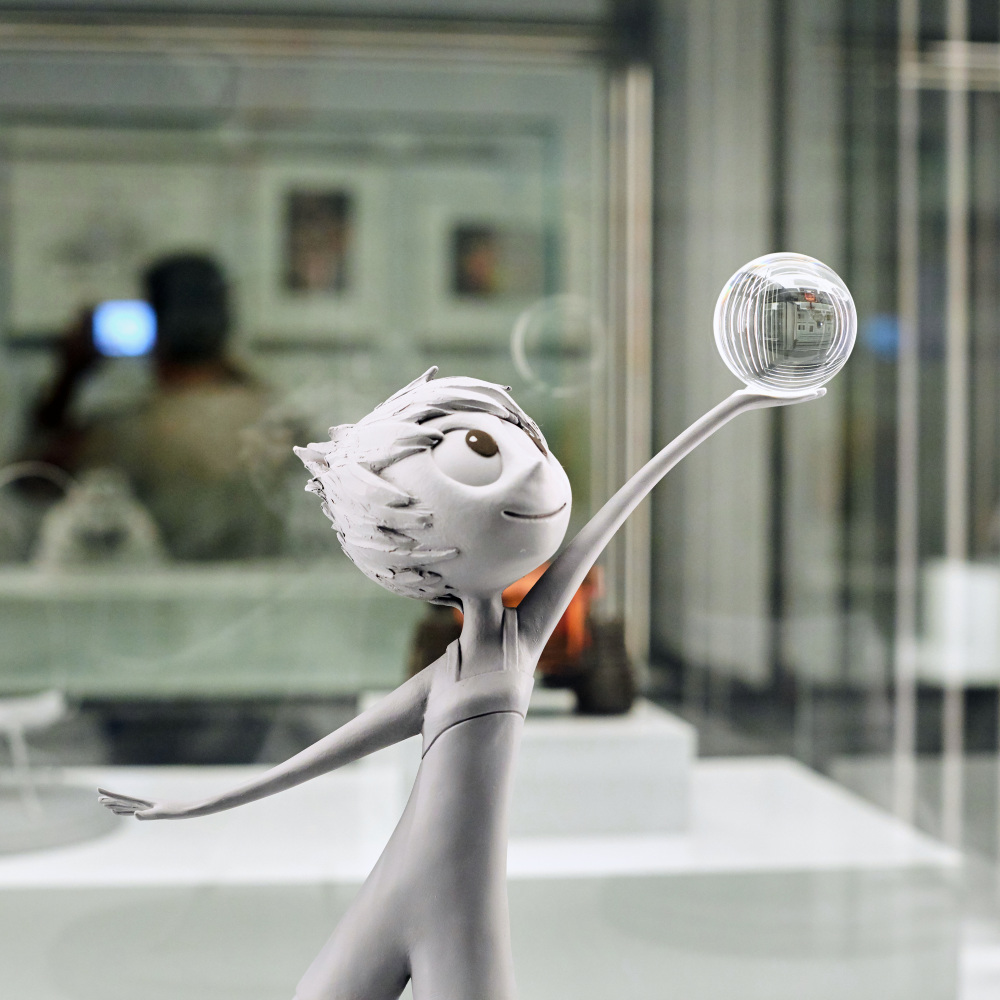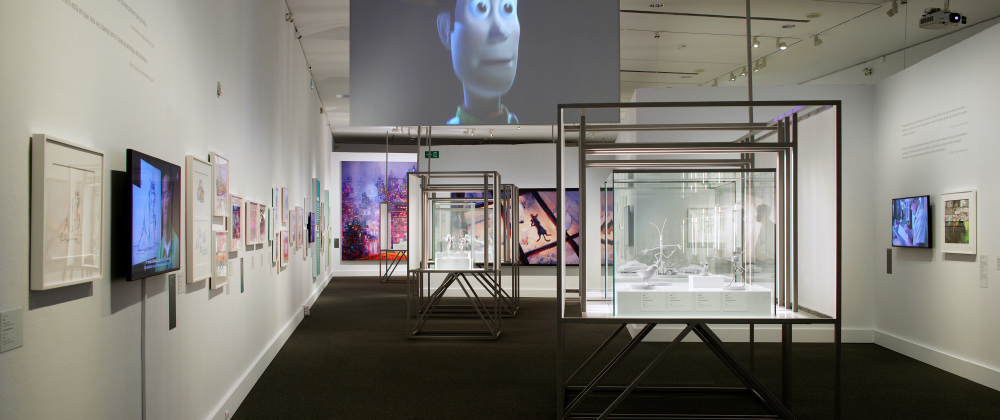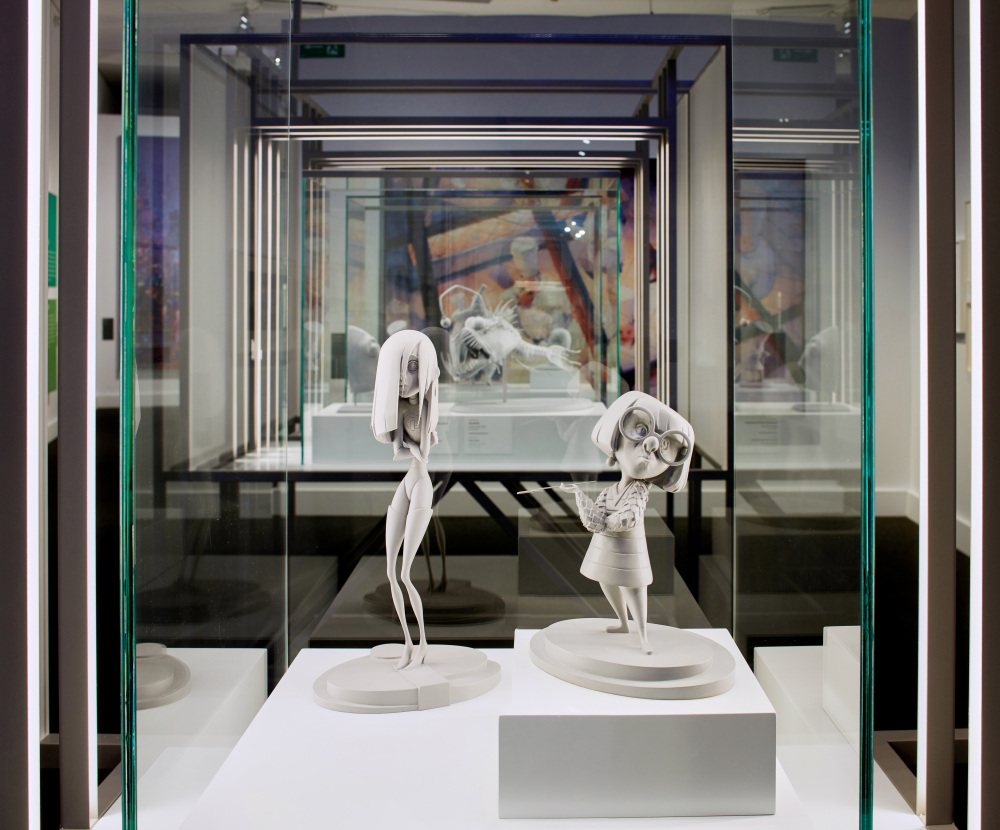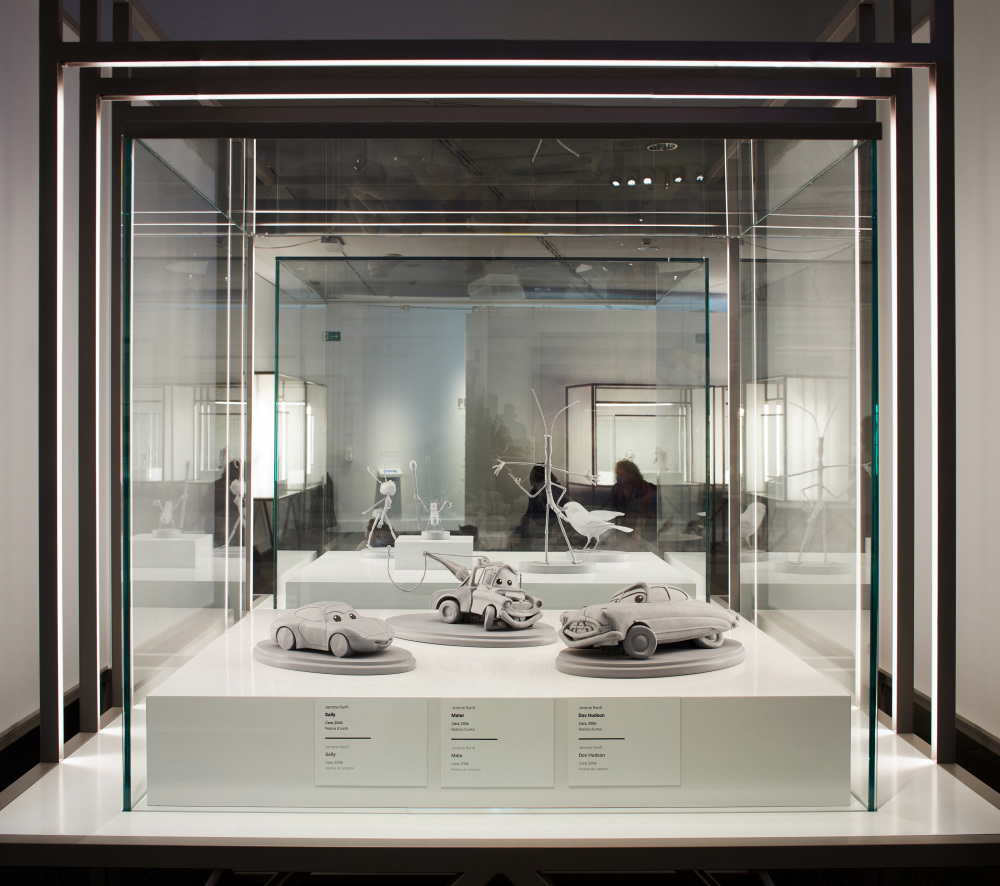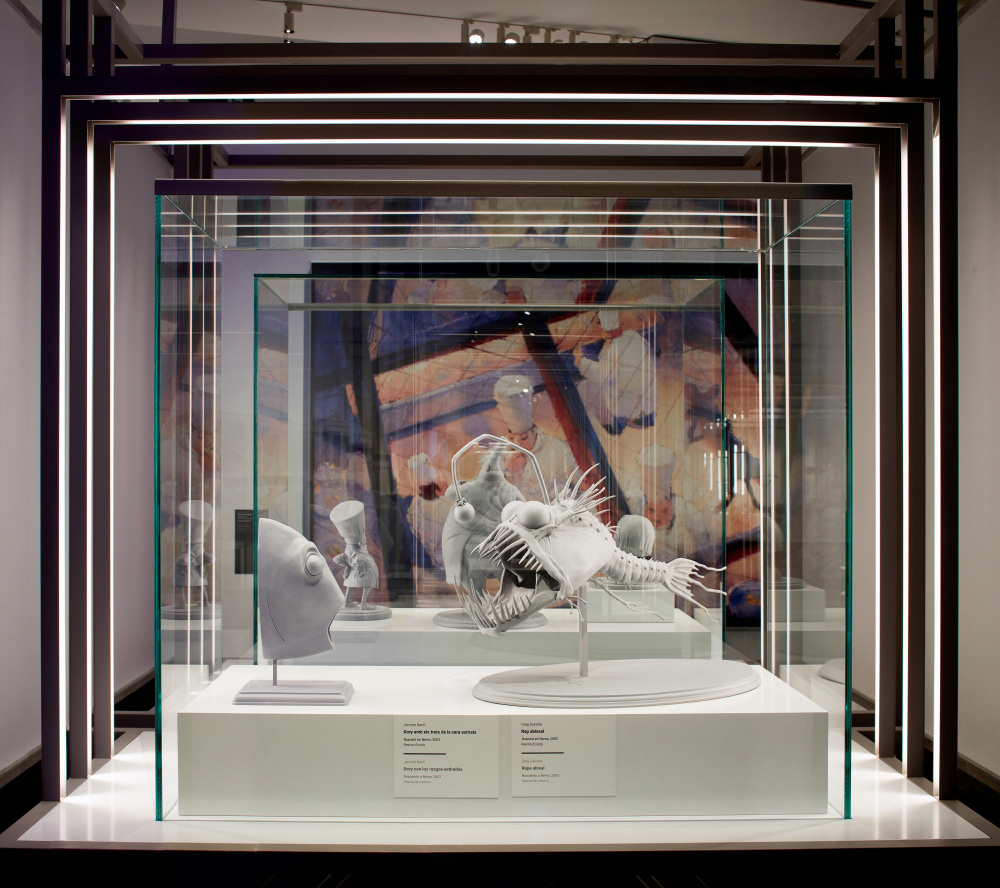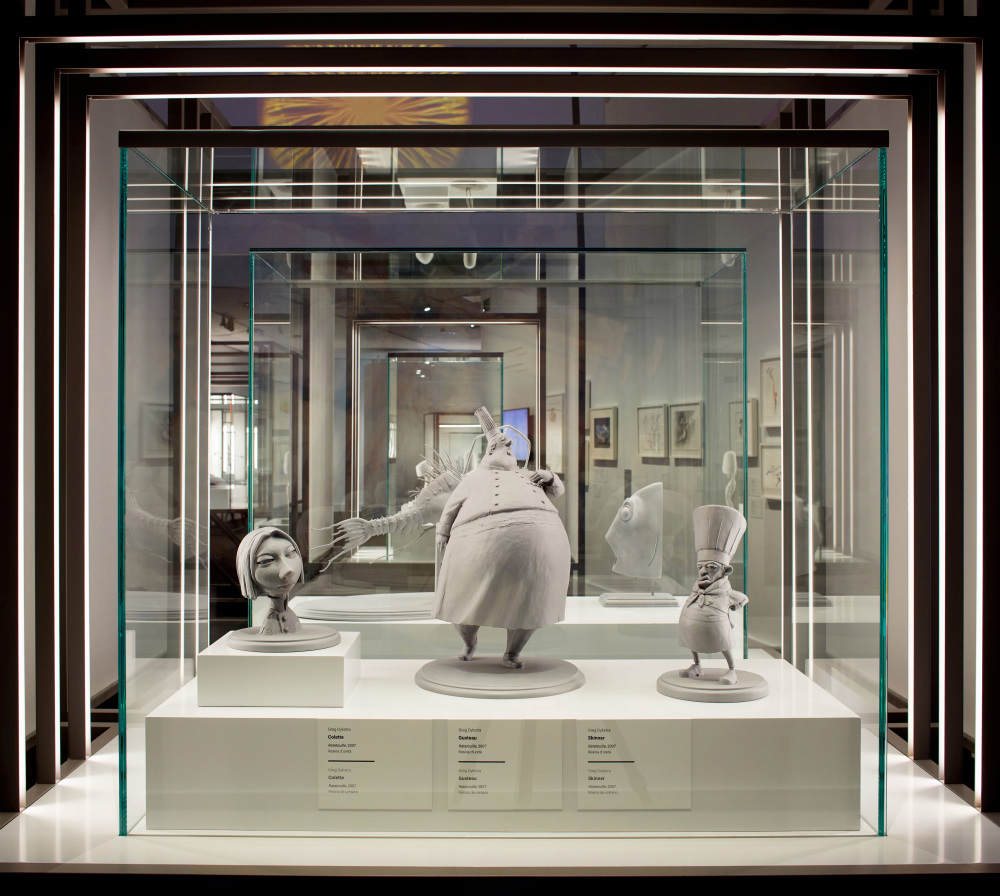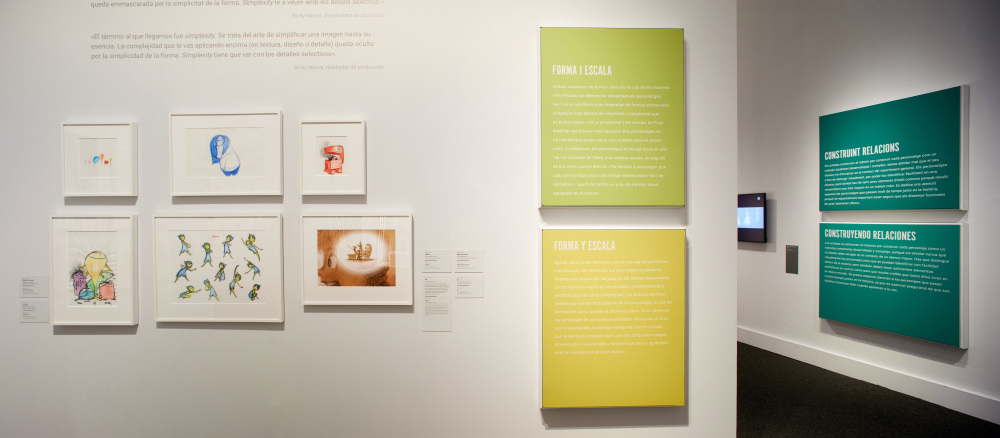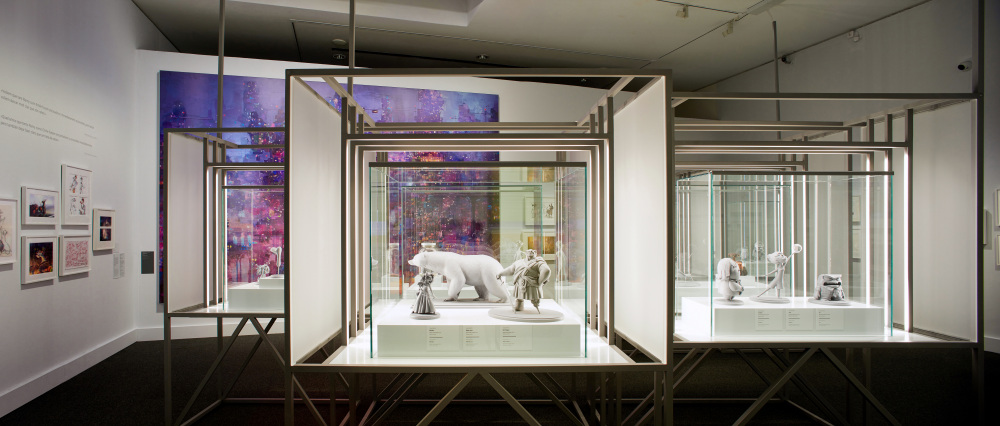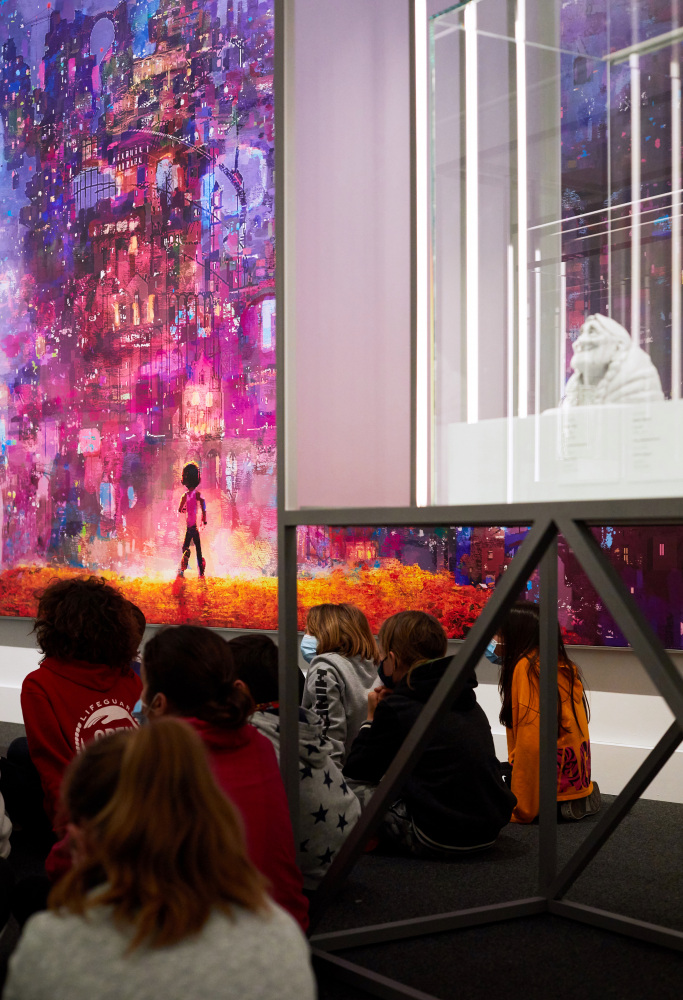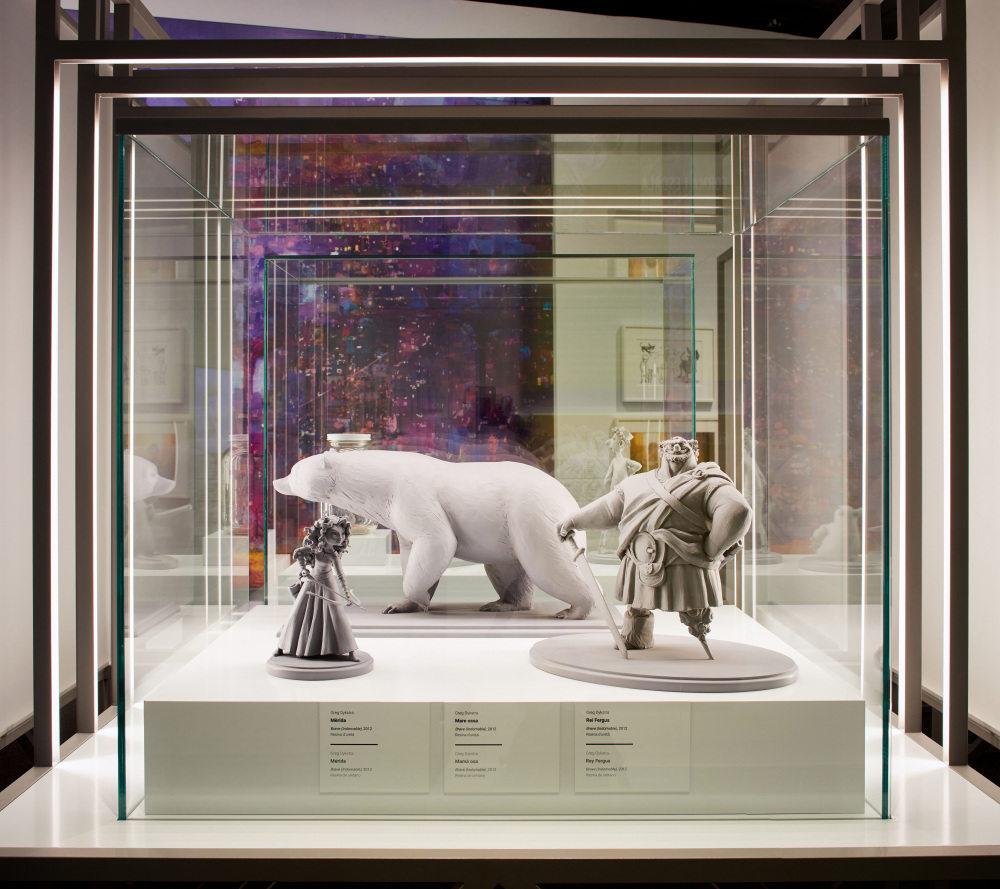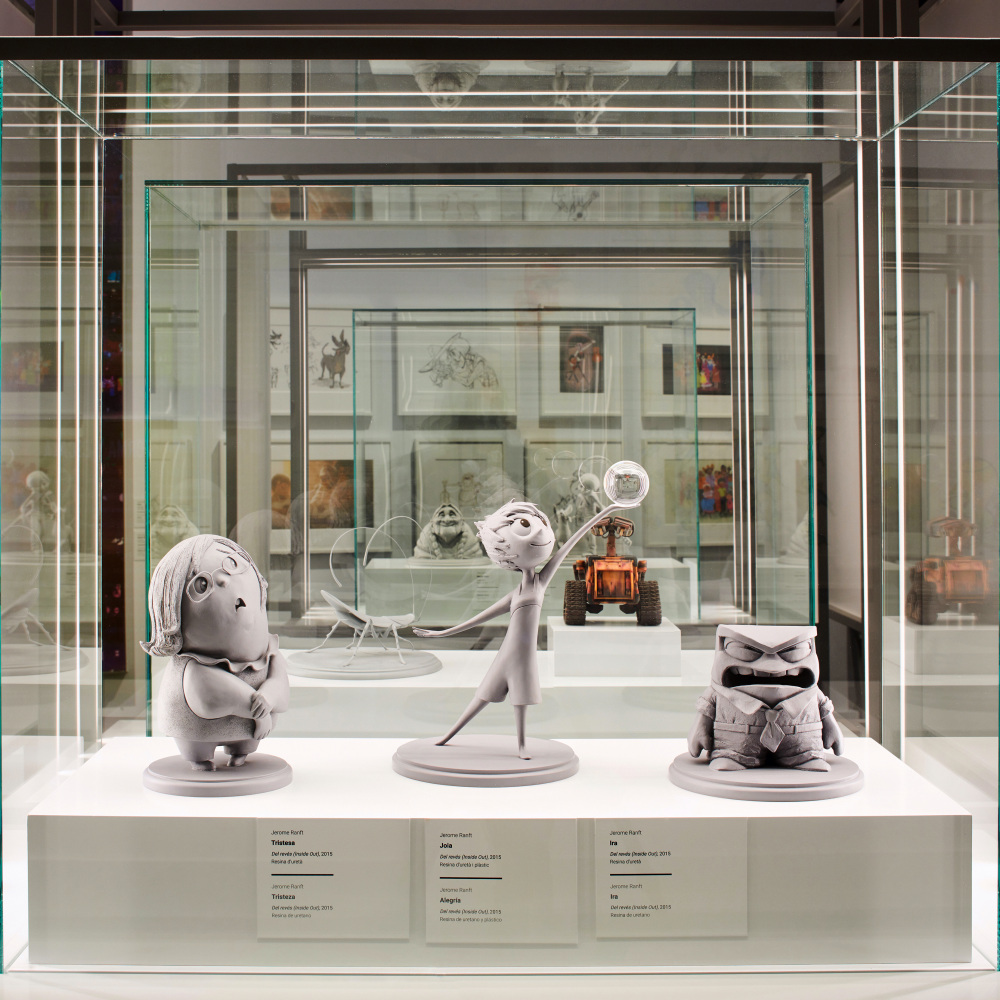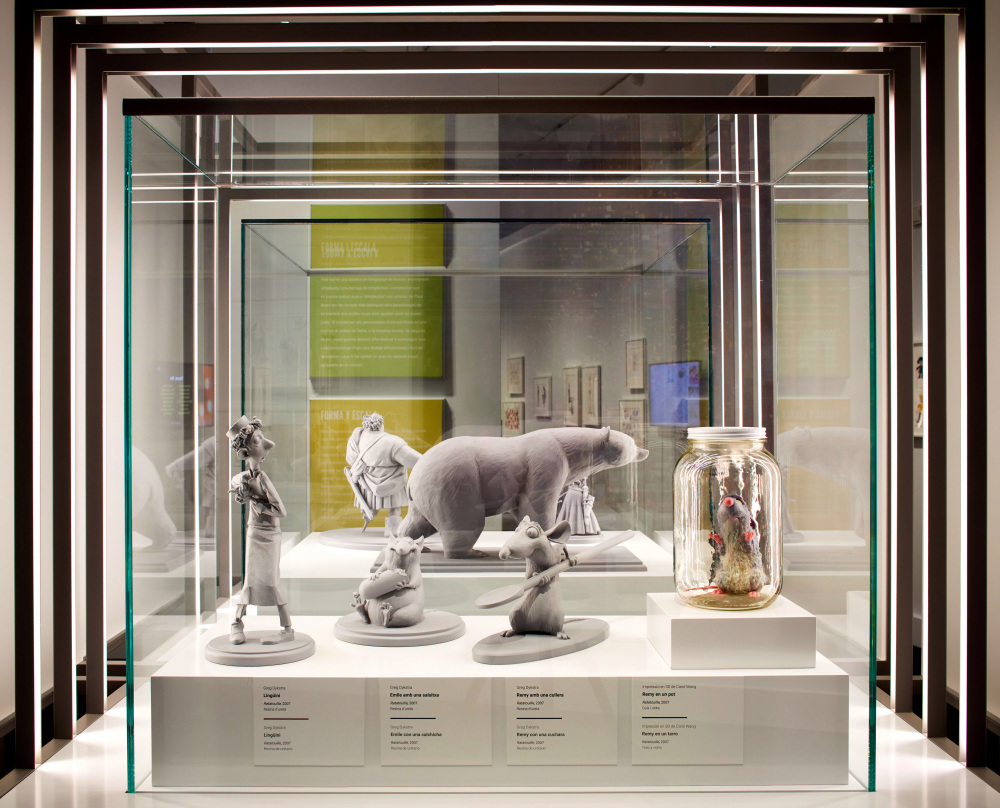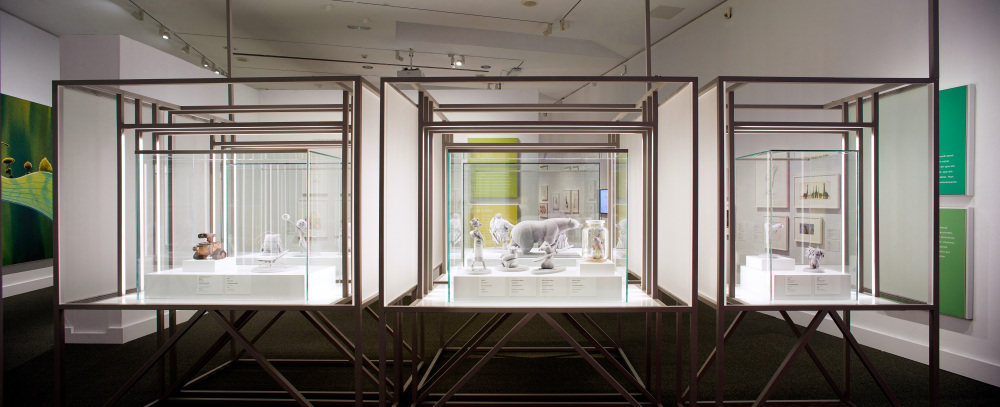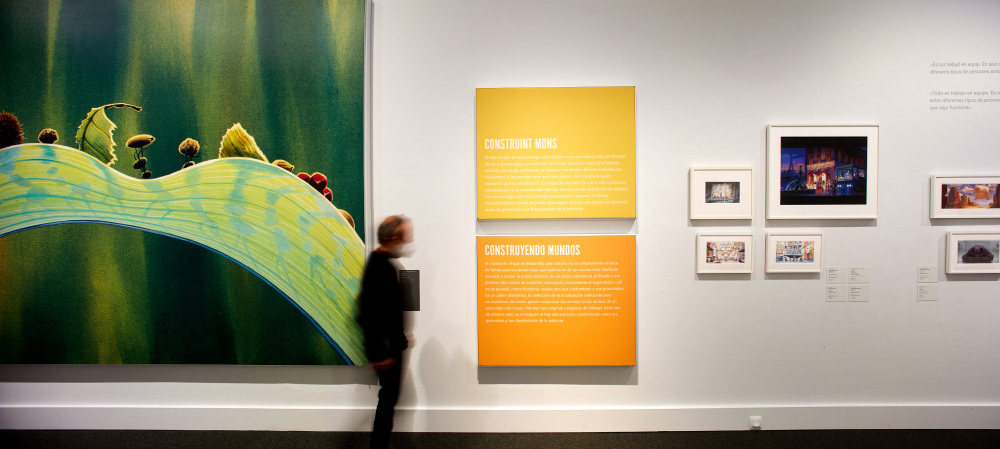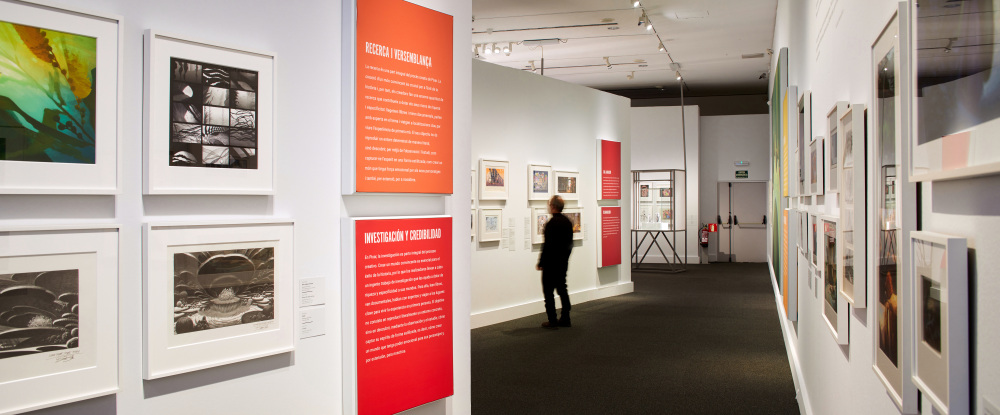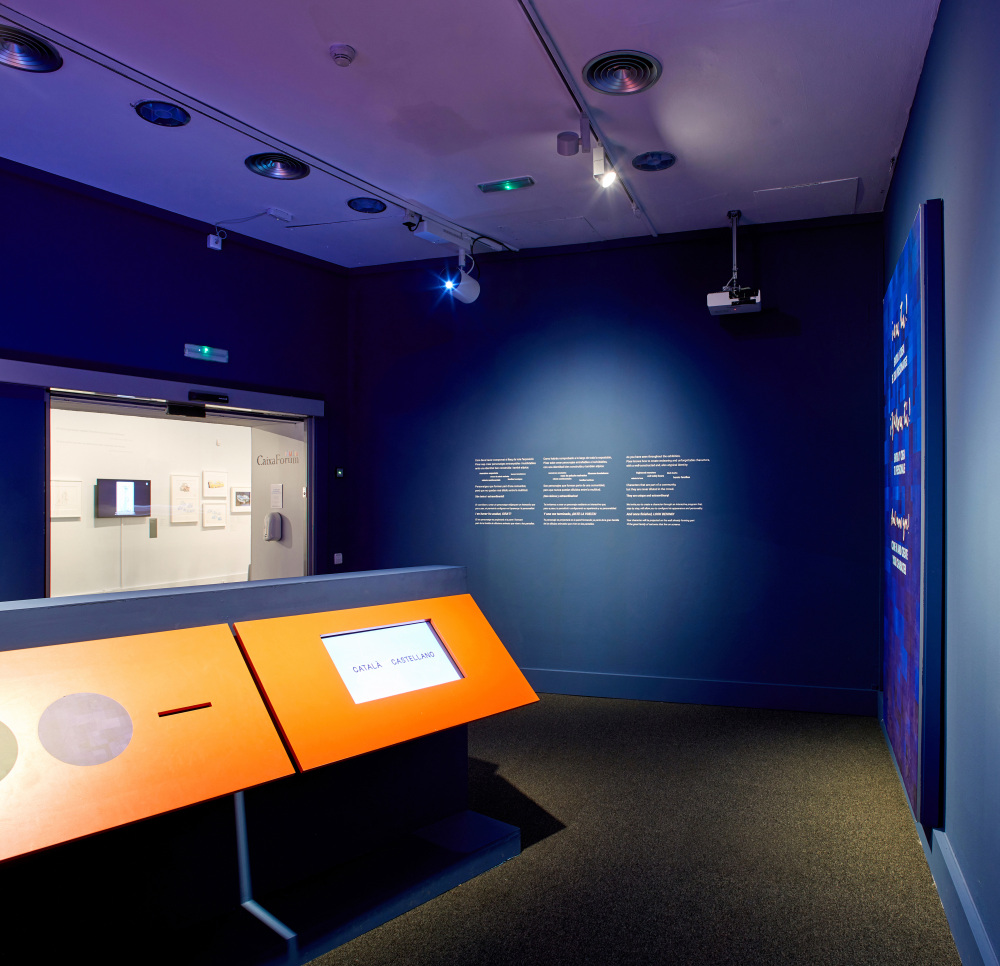The universe of the Pixar factory in a laboratory
The exhibition space "Pixar. Building characters" has been conceived as a three-act stage space, a laboratory of ideas, a blank space where the characters, the relationship between them and the spaces they inhabit are shown in great detail. The showcases will be the perfect device for hunting down all the details that the models on display want to show us about their character. Their mission will be to highlight their formal, gestural and expressive richness.
Based on the idea of a laboratory, the walls of the room become a white background, as do the display cases, in grey, light and white colours. Only the texts will accompany us on this journey with a range that will go from cold to warm colours at the end of the third act. The chromatic richness will be expressed from Pixar's artistic work.
The showcases - one of the most delicate elements of the exhibition - act as a device that allows all the details of the models on display to be shown. "la Caixa" Foundation was very clear that we had to work from a prototype to find what we had in mind. It wasn't until we achieved the desired effect on the characters - with the materials, the colour and, above all, the lighting of the display cases - that they began to be produced for the exhibition.
A perimeter bath highlights the resin models. The lighting, integrated into the showcases as a device for scientific analysis, highlights all the details and volumes of the models and allows us to understand the expressive richness of the characters. It is important to emphasise that in this section we are not interested in talking about colour. Pixar conceived the models in grey in order to study only the physiognomy and expressions that the artists achieved with the modelling.
The position of the models in the scenic space is designed to understand the relationship between them, especially in the second act. During the montage it was very surprising to see how the relationship between the characters changed depending on their position inside the display case. Looks became complicit or defiant, friendly or hostile depending on the orientation and position of their bodies, a turn on its axis in the wrong position completely changed the sense of their dramatic relationship, just like when actors meet their character in a theatre rehearsal. With Brianne Moseley, the curator of the exhibition, we decided on the ideal position to be faithful to the story and script of the original film. For this reason, the showcases are perfect artefacts to highlight the details and the relationship we want to show between all the figures. Inside is a small universe in which we have created life from the expressions and emotions that the characters convey to each other and show us, the guests, their story.
In the introductory area, the symbol of the Pixar factory takes centre stage: Luxo. In addition to being Pixar's brand image, he is just another character, as is evident in the audiovisual piece. The reading that we can extrapolate from Luxo's presentation is clear: the care and respect that Pixar gives to its characters, going so far as to entrust one with its own image.
We see a first act dedicated to explaining the psychological construction of the characters. Before shaping the character, it is necessary to define his or her personality, so that the former can act as a mirror of the latter. The construction of a good fictional character requires more than just inventing his or her present; it is also necessary to create a past that justifies his or her actions. In other words, we must be able to psychoanalyse him. Once the soul has been constructed, the challenge of designing a way to dress it begins, and this is when the whole space becomes a great laboratory, a space for the visitor to observe and analyse the creation of the character, the relationships between them and the spaces they will inhabit. A test bench, a space for analysis and observation. Any decorative element will interfere with this mission of understanding the analysis. The laboratory must be free of artifice because the relationship between characters and audience must be direct.
We begin the second act by abandoning the more theoretical plane, facing the materialisation of the character. This is the most intense space for analysis, where we can compare the relationships between them, where we can also see the path to the right result, taking into account three aspects: their personality, their role in the story and their relationship with other actors. This is an area of error and trial and error. Here we will witness the evolution of the form. Along the way there will be versions and prototypes. In the end only one can remain. We become the scientists and spectators of this creative process.
The third act is the final act, the product of the first and second: the creation of a new reality. We identify this space as the universe, and it is represented as an enveloping, polyhedral reality with many overlapping heads of interpretation. However, to enjoy this universe requires the disappearance of all the ingenuities that have made it possible. The mechanism disappears and we are faced with life. The product of a story that moves forward thanks to the action of some plausible characters, relating to other characters and in an equally plausible environment.
The epilogue of the exhibition is reserved for what we can define as the "Construction of collective memory". Pixar's creations become a cultural asset and a common heritage. This epilogue represents the memory, the mark that Pixar's stories and characters have left on all of us. It takes the form of a montage of images based on scenes from different stories that together inevitably create a discourse different from the original.
To remember is to re-create.
-
Ignasi Cristià
Promoter institution: "la Caixa" Foundation
Location: Different venues of the CaixaForum (Spain)
Photography: Pepo Segura

